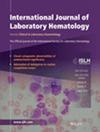Comparison of four D-dimer assays in the context of venous thromboembolism in the emergency department
Abstract
Introduction
This observational study conducted across seven emergency care units compares the efficacy of four D-dimer detection methods, namely HemosIL D-dimer HS (HS), HemosIL D-dimer HS-500 (HS-500), VIDAS D-dimer (VIDAS), and HemosIL AcuStar D-dimer (ACUSTAR). The primary focus is on patients with a clinical suspicion of deep venous thrombosis (DVT) or pulmonary embolism (PE).
Methods
A total of 149 samples were collected from patients with suspected DVT or PE. The confirmation of DVT/PE was based on calf ultrasound or computed tomography-Angiography. Direct comparisons were made between the different detection methods, considering both their analytical performance and clinical utility. Additionally, the impact of an age-adjusted cut-off on the diagnostic accuracy of each method was assessed.
Results
The results revealed comparable negative predictive value, sensitivity, and specificity across the methods, with a notable exception of increased specificity for HS compared with HS-500 (50.8% vs. 41.5%, p = 0.03). Further analysis incorporating an age-adjusted cut-off demonstrated a significant improvement in specificity for HS. When using the age-adjusted cut-off, HS exhibited a substantial increase in specificity compared with HS-500 (63.1% vs. 49.2%, p = 0.004) and demonstrated significantly higher specificity compared with VIDAS (63.1% vs. 53.8%, p = 0.04).
Conclusion
The study emphasizes the nonuniversal effect of an age-adjusted cut-off and discusses the potential necessity for different cut-off values, particularly in the case of HS-500. These findings contribute to the understanding of D-dimer detection methods in the context of DVT and PE, providing insights into their relative performances and the potential optimization through age-adjusted cut-offs.

 求助内容:
求助内容: 应助结果提醒方式:
应助结果提醒方式:


